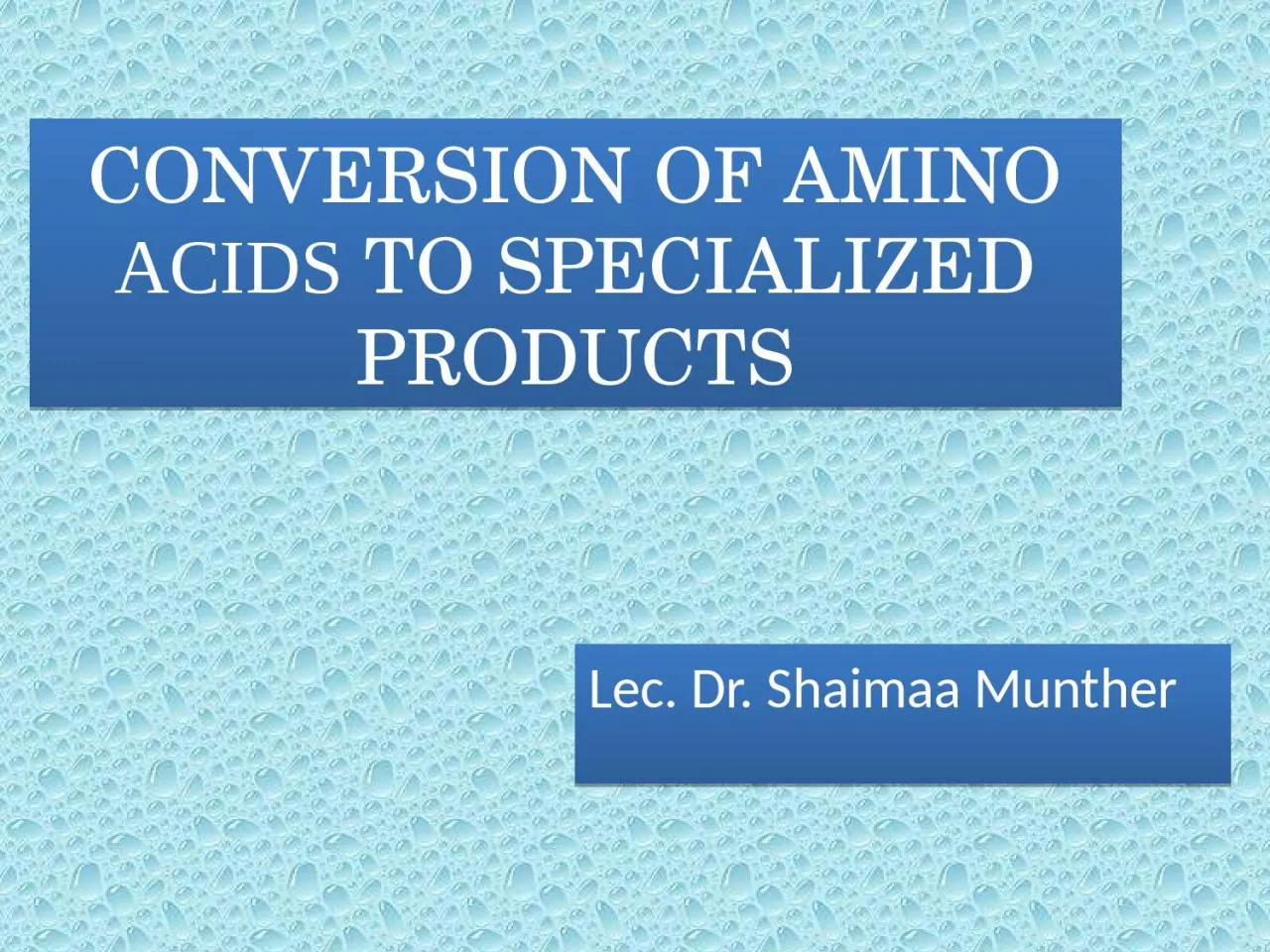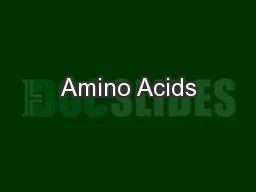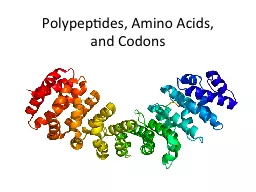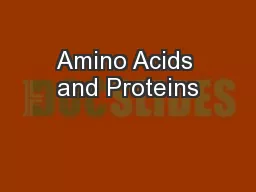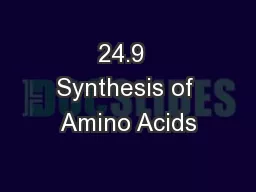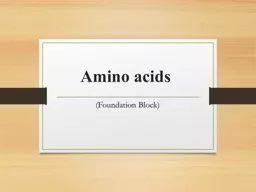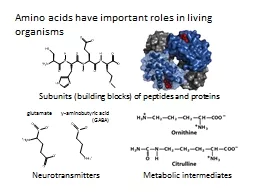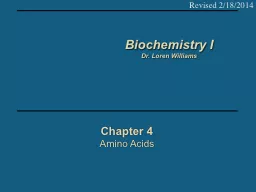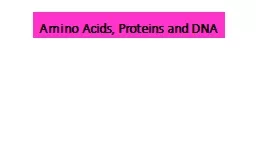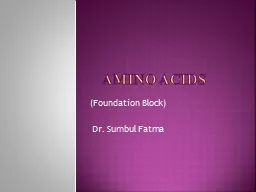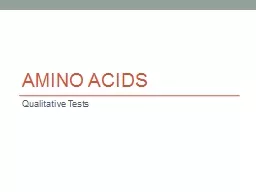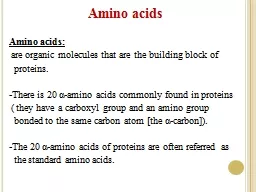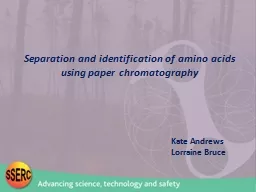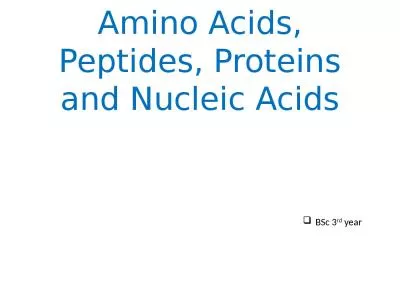PPT-CONVERSION OF AMINO ACIDS
Author : Mysticlover | Published Date : 2022-07-28
TO SPECIALIZED PRODUCTS Lec Dr Shaimaa Munther CONVERSION OF AMINO ACIDS TO SPECIALIZED PRODUCTS In addition to serving as building blocks for proteins amino
Presentation Embed Code
Download Presentation
Download Presentation The PPT/PDF document "CONVERSION OF AMINO ACIDS" is the property of its rightful owner. Permission is granted to download and print the materials on this website for personal, non-commercial use only, and to display it on your personal computer provided you do not modify the materials and that you retain all copyright notices contained in the materials. By downloading content from our website, you accept the terms of this agreement.
CONVERSION OF AMINO ACIDS: Transcript
Download Rules Of Document
"CONVERSION OF AMINO ACIDS"The content belongs to its owner. You may download and print it for personal use, without modification, and keep all copyright notices. By downloading, you agree to these terms.
Related Documents

